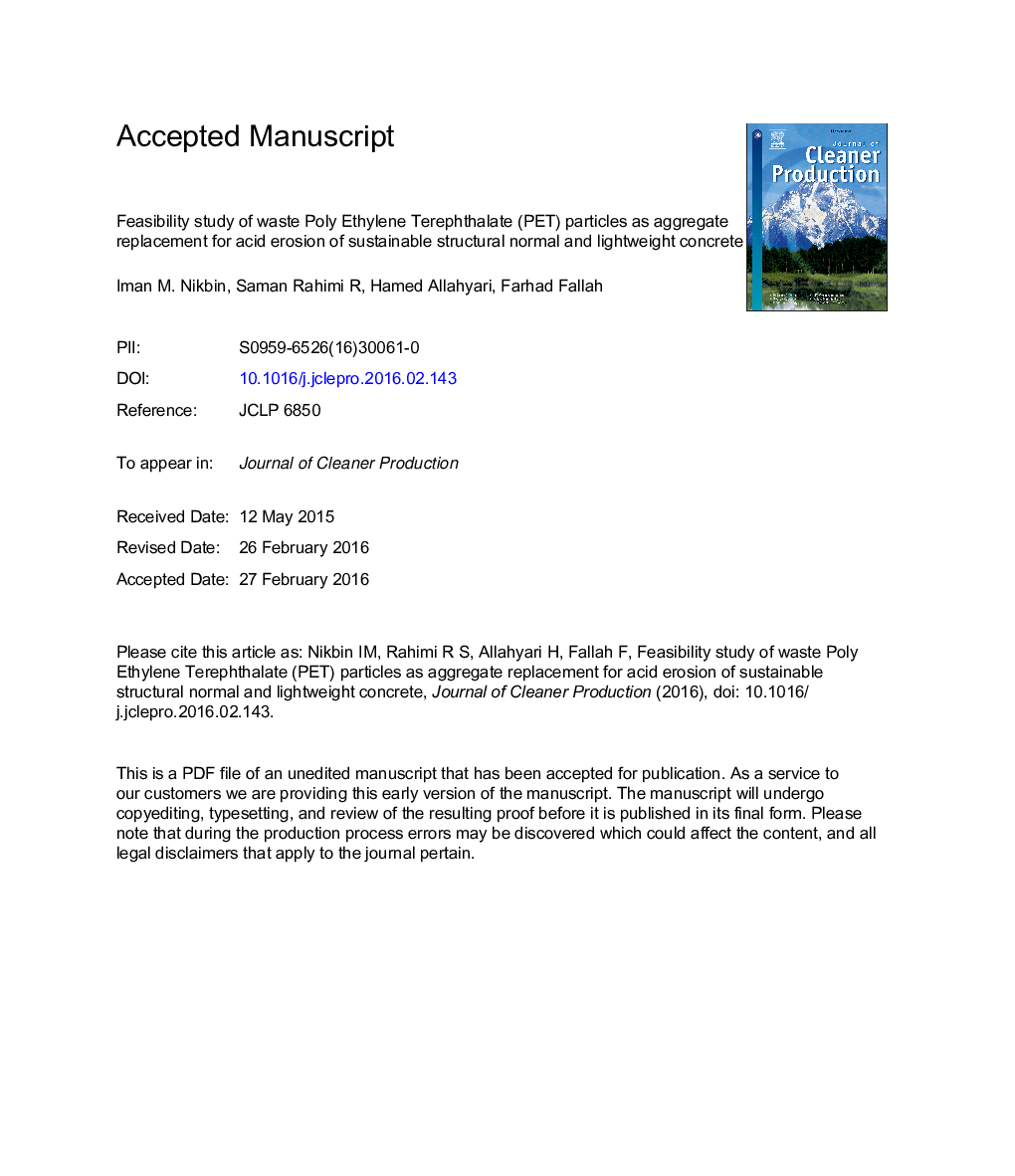| Article ID | Journal | Published Year | Pages | File Type |
|---|---|---|---|---|
| 8102070 | Journal of Cleaner Production | 2016 | 41 Pages |
Abstract
Using PET as a raw material to produce bottles or containers is very common that after usage leads to a challenging environment protection issue. A large amount of consumed PET become waste and require vast areas of land for storage since several tons of that cannot be fully recycled at once. Concerning this issue, there is a potential to recycle wastes such as waste PET to produce concrete and to prevent the direct contact of plastics with the environment due to a longer service life of concrete. In this study, the resistance of normal PET concrete (NPC) and lightweight PET concrete (LWPC) against sulfuric acid erosion was investigated. Percentages of 5, 10 and 15 of waste PET particles substitute for fine natural aggregate in both NPC and LWPC mixtures. After curing and then immersing specimens in 5% sulfuric acid solution, in intervals of 15, 30 and 60 days, crushing load, mass measuring, and ultrasonic wave velocity tests were conducted on them. According to the results, not only LWPC did erode less than NPC, but also their crushing load reduction, mass loss, and ultrasonic wave velocity reduction rate was lower than the NPC specimens. Furthermore, the lightweight concrete without PET (LWC) showed a lesser reduction rate, compared to normal concrete (NC). Reusing waste PET in concrete consumes large amounts of it, which compensates for its disposal issues, protects natural resources, decreases the dead load of buildings due to its low unit weight, and in this study led to improving acid resistance of both types of concrete.
Related Topics
Physical Sciences and Engineering
Energy
Renewable Energy, Sustainability and the Environment
Authors
Iman M. Nikbin, Saman Rahimi R, Hamed Allahyari, Farhad Fallah,
